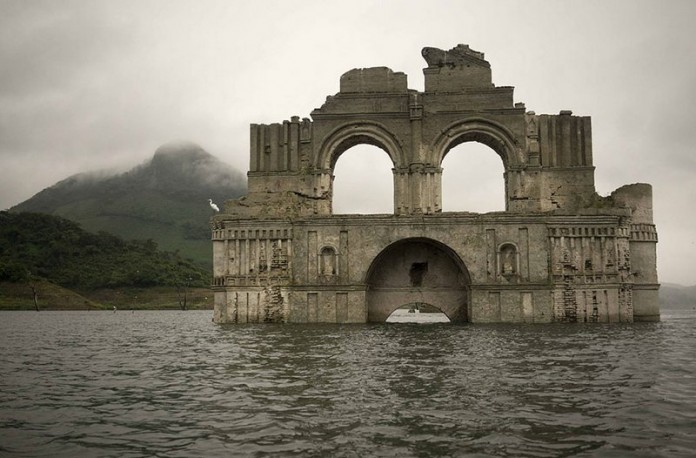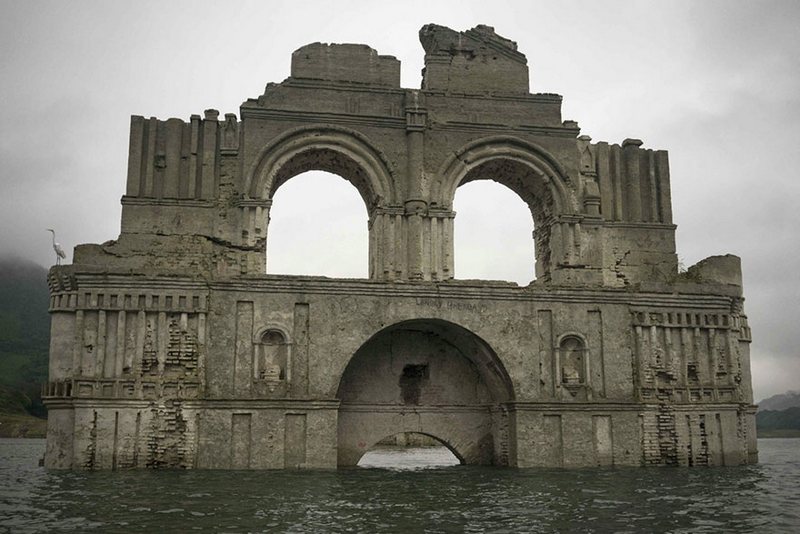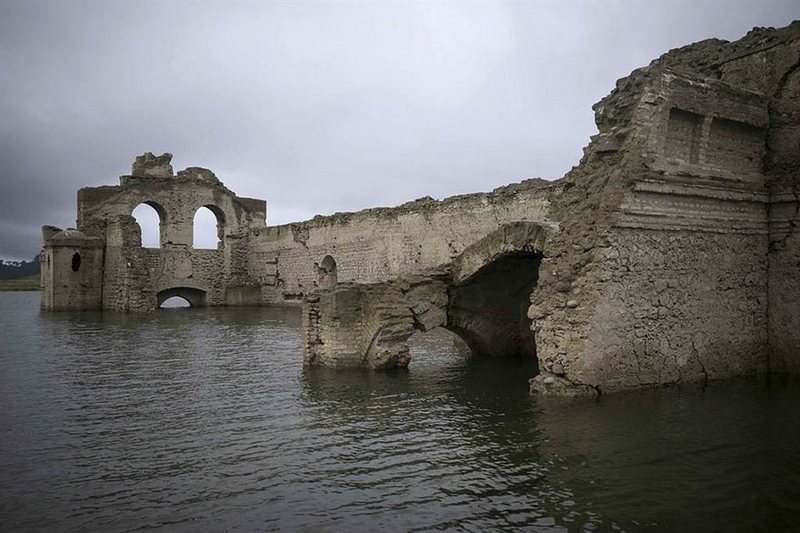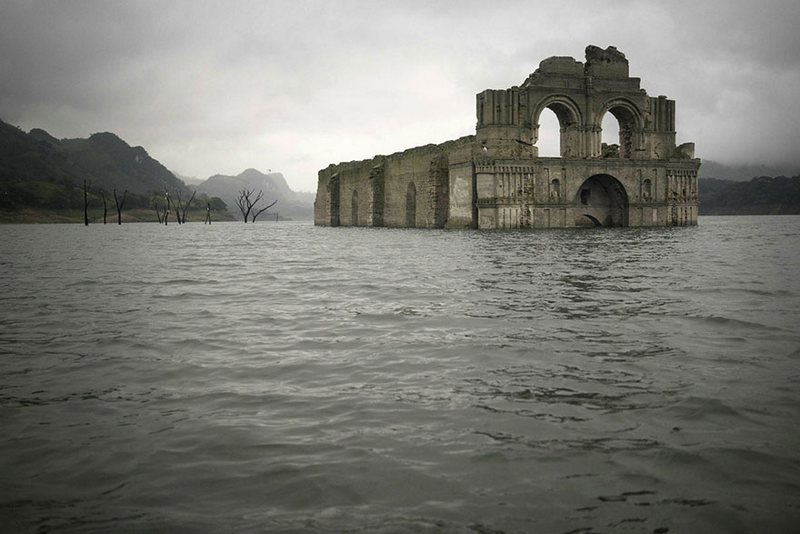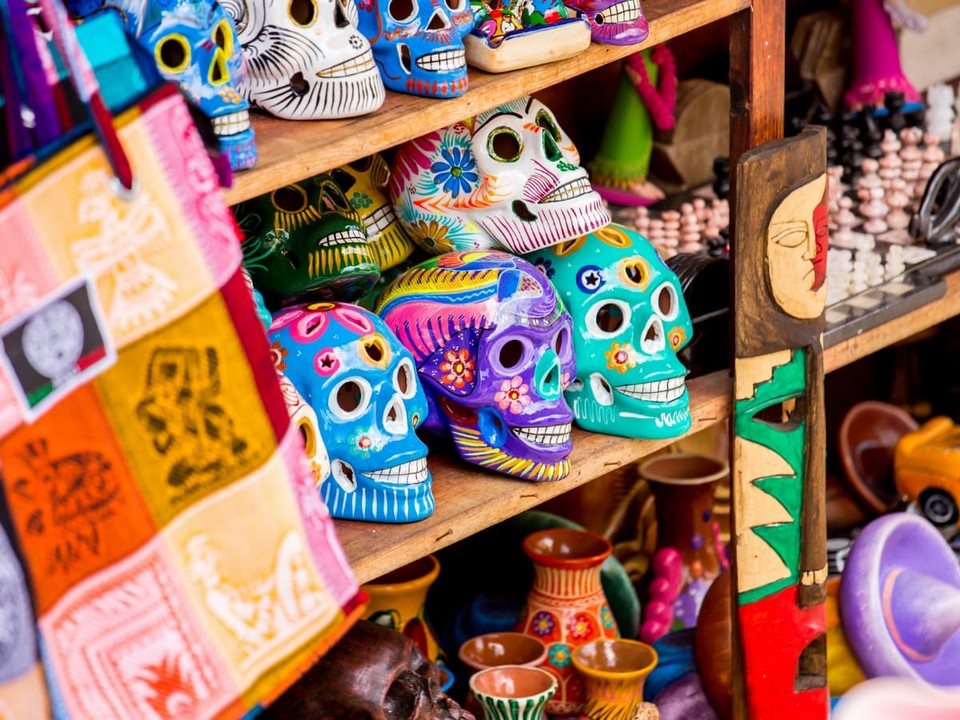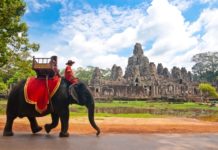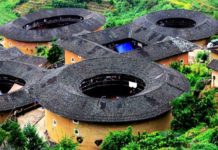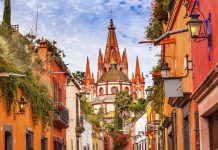A 400-year-old church submerged in a reservoir in the southern Mexican state of Chiapas has emerged due to a drought in the region that has reduced water levels by 25 meters (82 feet). Local fishermen have been taking visitors onto the Grijalva river to visit the church, which was submerged by a dam built in 1966 to form the Nezahualcoyotl reservoir. The church has emerged twice since the dam was built.
- What to buy in Mexico? — Top 15+ souvenirs & best things to buy in Mexico
- Top things to do in Siem Reap — 16+ must do & best things to do in Siem Reap
- Siem Reap itinerary 4 days — How to spend & what to do in Siem Reap in 4 days?
- Great Wall secrets — 10 interesting facts about the Great Wall of China you probably didn’t know
- Explore Fujian Tulou — Inside of “inviolable” tulous of China
The 16-meter-tall church, known as the Temple of Santiago (or of Quechula) was built some time in the 16th century but “was abandoned due the big plagues of 1773-1776,” Mexican architect Carlos Navarrete told AP News. The church was built due to its position along an important highway built and used by Spanish conquistadors. “It was a church built thinking that this could be a great population center, but it never achieved that,” Navarrete said. “It probably never even had a dedicated priest.” The church is also surrounded by the submerged town of Quechula.
(h/t: ap news)
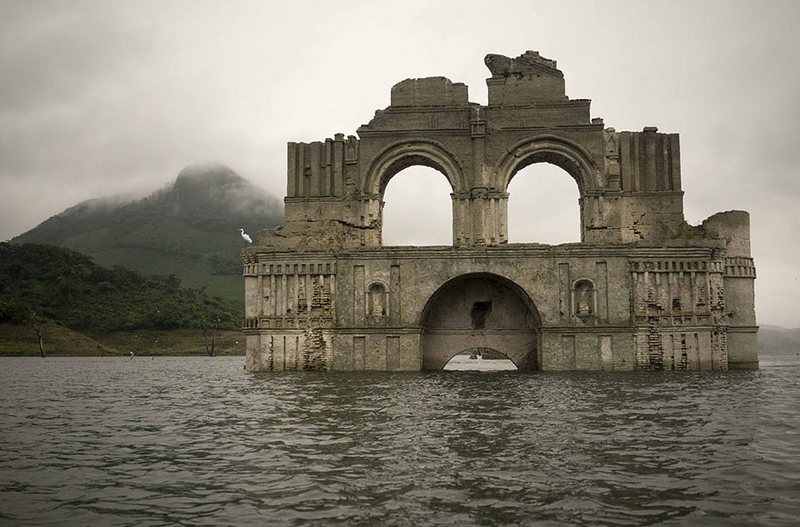
The relics of a 16th-century church built by Spanish colonisers has emerged from a reservoir in the south of Mexico.
It is the second time the church, usually submerged on the reservoir bed, has been revealed in the state of Chiapas as a result of drought.
A water level drop of at least 80 feet in the Grijalba river which feeds the reservoir has revealed the 400-year-old roofless religious building, with its 10 metre high walls, 61 metre length and 14 metre wide hall.
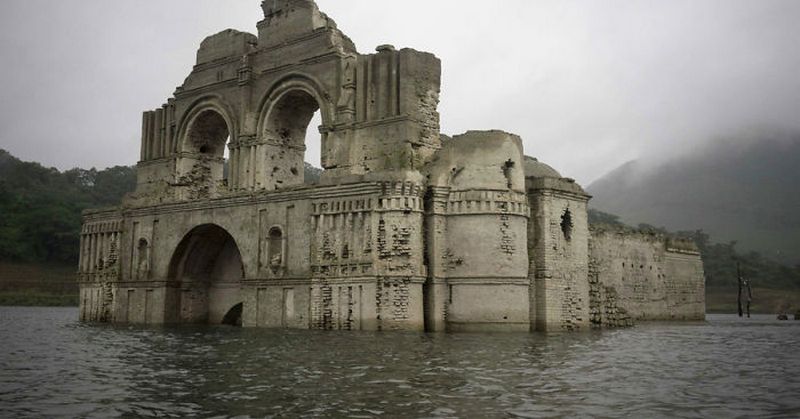
The river was last this low in 2002, when visitors were able to walk about inside the church.
Today, fishermen are ferrying curious passengers around the ruins, which were submerged in 1966 when the nearby dam was completed and the area flooded.
Architect Carlos Navarrete, who worked with authorities on a report about the building, said: “The church was abandoned due to the big plagues of 1773 to 1776.”
It is linked to a famous figure in Spanish history, namely Friar Bartolome de las Casas, who arrived in the Quechala locality in the mid-16th century with a group of monks that built the church.
Bartolome de las Casas was the first Bishop of Chiapas and initially supported the colonisation and subjugation of the native Indians of the region.
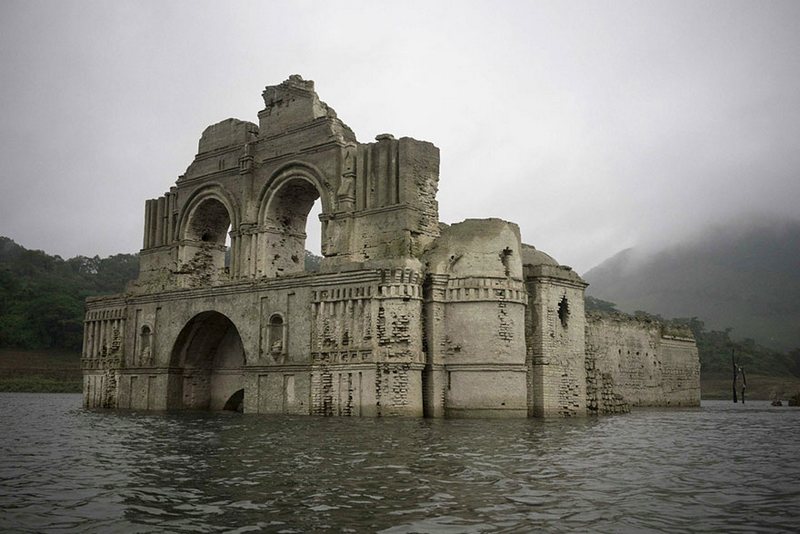
In later years, however, he advocated strongly for the abolition of slavery, both in situ and back in the Spanish court of King Charles V.
He managed to get the New Laws passed in 1542 which curtailed many of the slavery practices in Peru. They were so unpopular with settlers in the South America that King Charles backed down and removed some of the most important aspects of the legislation.

Image credits: AP / David von Blohn































![10 best airports in Asia in 2016 [RANKED] kuala-lumpur-international-airport-best airports in asia in 2016 by skytrax ratings](https://livingnomads.com/wp-content/uploads/2016/08/29/kuala-lumpur-international-airport-best-airports-in-asia-in-2016-by-skytrax-ratings-218x150.jpg)








